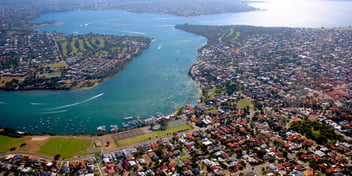Water Corporation adapts to deal with low rainfall in WA
Water Corporation's evolving innovation towards approaches for water planning and provision is set to continue as parts of Western Australia experiencing some of the lowest rainfall on record.
Western Australia Water Minister Dave Kelly said climate change is the biggest challenge to the continued supply of clean, fresh drinking water to Western Australians, but that Water Corporation continues to adapt its approach to water security in the country’s largest state.
“Since the 1970s, annual winter rainfall in the south-west of WA has reduced by around 20%,” he said.
“According to the Bureau of Meteorology, this winter was Perth's equal warmest and fourth driest on record. Only 490mm of rain filled metropolitan gauges at the end of winter, which is 27.6% below the long-term average.”
Furthermore, the combination of drier soils and lower rainfall means less water is flowing into metropolitan dams, Kelly said.
“To the end of August, just 21.8 billion litres of streamflow fed into Perth dams – 90% below the long-term average. For perspective, 21.8 billion litres is only enough to supply Perth households and businesses with water for around 22 summer days,” he said.
Kelly said lower rainfall averages have prompted an innovative approach to water supply planning, with Water Corporation adopting alternatives to the traditional centralised water utility delivery model.
“Today, nearly half of the water supplied by the WA Government through Water Corporation, via its Integrated Water Supply System (IWSS) to Perth, the Goldfields-Agricultural region and parts of the South West can be manufactured independent of rainfall,” he said.
“In addition, more recently the IWSS has been linked through to the Great Southern Towns Water Supply scheme to effectively provide climate independent drinking water supply to vast areas of the Great Southern region.”
Since 2001, the WA Government, through Water Corporation, has invested $2.2 billion in climate-resilient water sources such as desalinated seawater, groundwater replenishment and recycled water, Kelly said.
“Perth’s two seawater desalination plants – located in Kwinana and Binningup – have the capacity to produce a combined 145 billion litres of water annually if required. Water Corporation is also advancing plans for a third seawater desalination plant in Perth,” he said.
“Forecast growth projections suggest the next big source is likely to be needed within the next five to 10 years.”
In 2017, Water Corporation commissioned Australia’s first Groundwater Replenishment Scheme, capable of providing 14 billion litres of water annually.
“Later this year, the scheme’s second stage will come online, which will double the recharge capacity, supplying up to 10% of Perth’s drinking water,” Kelly said.
In regional WA, the impact of climate change is felt just as acutely, Kelly said.
“For some areas, particularly with a small number of properties, water carting offers a flexible, sustainable and cost-effective supply option when rainfall is low,” he said.
“The WA Government is also investing in priority infrastructure projects such as the $25 million Denmark-Albany pipeline, new source investigation in water deficient areas and technologies such as localised desalination modules.
“In such a large state like WA, supply planning is always evolving, and the WA Government, through Water Corporation, is continually investigating new solutions to secure our water supply future.”
Such initiatives include the potential to harvest subsoil drainage water for storage in aquifers, innovative ways to recover energy from wastewater and automating the design of water and wastewater infrastructure.
“Alongside climate-resilient water sources and water recycling, demand management is central to long-term supply security in the face of climate change,” Kelly said.
“Water Corporation oversees a wide range of water efficiency programs to inspire WA households, businesses and industries to conserve water. From 2001 to 2018, these initiatives helped to save around 122.2 billion litres.
“Through community education and making it easier for people to live a waterwise lifestyle, we can defer the need for new water sources.
“We’re proud to be seen as a world-leader in water supply innovation and together with the community, industry, business and government are committed to meeting the challenge of climate change now and into the future.”

